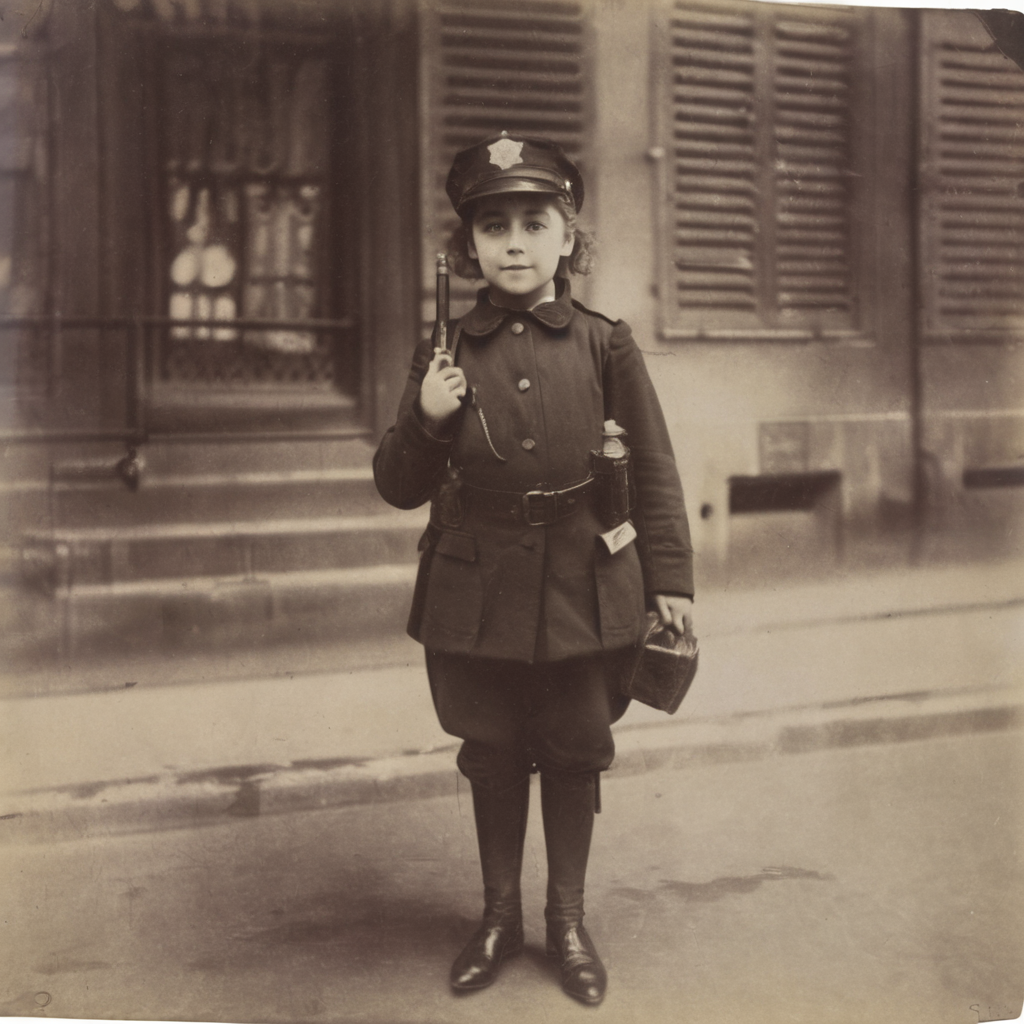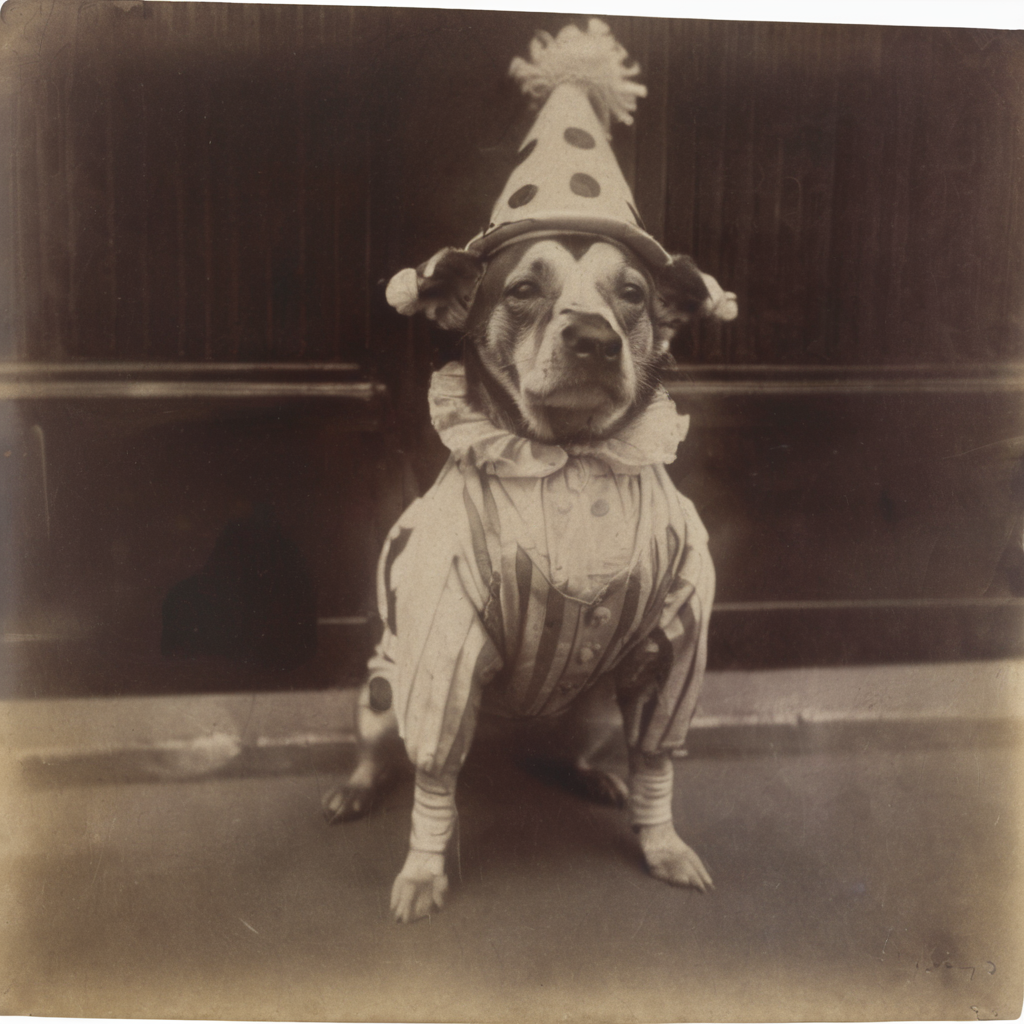tags:
- text-to-image
- stable-diffusion
- lora
- diffusers
- template:sd-lora
widget:
- text: >-
a antique photograph of a woman wearing a superhero costume, by eugene
atget, monochrome <lora:eugene_atget_sdxl_v1:1>
output:
url: images/00147-693647877.png
- text: >-
a antique photograph of a cat wearing a superhero costume, by eugene
atget, monochrome <lora:eugene_atget_sdxl_v1:1>
output:
url: images/00151-693647877.png
- text: >-
a antique photograph of a woman wearing a space suit, by eugene atget,
monochrome <lora:eugene_atget_sdxl_v1:1>
output:
url: images/00126-693647877.png
- text: >-
a antique photograph of a girl wearing a police uniform, by eugene atget,
monochrome <lora:eugene_atget_sdxl_v1:1>
output:
url: images/00135-693647877.png
- text: >-
a antique photograph of a boy wearing a clown costume, by eugene atget,
monochrome <lora:eugene_atget_sdxl_v1:1>
output:
url: images/00141-693647877.png
- text: >-
a antique photograph of a dog wearing a clown costume, by eugene atget,
monochrome <lora:eugene_atget_sdxl_v1:1>
output:
url: images/00143-693647877.png
base_model: stabilityai/stable-diffusion-xl-base-1.0
instance_prompt: by eugene atget
license: cc-by-nc-4.0
Eugene Atget

- Prompt
- a antique photograph of a woman wearing a superhero costume, by eugene atget, monochrome <lora:eugene_atget_sdxl_v1:1>

- Prompt
- a antique photograph of a cat wearing a superhero costume, by eugene atget, monochrome <lora:eugene_atget_sdxl_v1:1>

- Prompt
- a antique photograph of a woman wearing a space suit, by eugene atget, monochrome <lora:eugene_atget_sdxl_v1:1>

- Prompt
- a antique photograph of a girl wearing a police uniform, by eugene atget, monochrome <lora:eugene_atget_sdxl_v1:1>

- Prompt
- a antique photograph of a boy wearing a clown costume, by eugene atget, monochrome <lora:eugene_atget_sdxl_v1:1>

- Prompt
- a antique photograph of a dog wearing a clown costume, by eugene atget, monochrome <lora:eugene_atget_sdxl_v1:1>
Model Overview
This model card details a LoRA (Low-Rank Adaptation) model trained on the Eugene Atget Dataset, which is accessible from our Eugene Atget Dataset collection. The model specializes in generating and analyzing historical urban imagery, particularly from the early 1900s Parisian scenes captured by Eugène Atget. The Atget Visions LoRA model is fine-tuned to identify and recreate the unique photographic style of Eugène Atget, characterized by its detailed depiction of Parisian architecture, streets, and daily life at the turn of the 20th century.
Training Configuration
- Dataset: Eugene Atget Dataset
- Epochs: 17
- Number of Images: 31
- Repeats per Image: 10 (Each image was used 10 times during training to ensure depth in learning)
- Optimizer: DAdaptAdam (Specifically chosen for its efficiency in training LoRA models)
- Precision: bf16 (Optimal balance of performance and memory usage)
- Main Trigger: The model is triggered by the phrase "by eugene atget" to generate images in the style of the photographer.
- Xformers: Enabled for enhanced efficiency in transformer models
- Captioning Method: GPT-Vision, with captions optimized for token shuffling for enhanced learning
- Base Model: Stable Diffusion XL 1.0, renowned for its detailed and nuanced image generation capabilities
Model Usage
This LoRA model is adept at replicating the distinctive photographic style of Eugène Atget, useful for historical image analysis, artistic studies, and education in the realm of early photography.
Performance and Limitations
- Performance: Exhibits a strong ability to generate images with a historical and artistic aesthetic akin to Atget's work.
- Limitations: With a focused dataset of 31 images, the model may not cover the full breadth of Atget's portfolio or the variability of early 20th-century Parisian imagery.
Ethical Considerations
- Intended Use: The model is designed for non-commercial purposes, particularly useful in historical research, art analysis, and education.
- Bias and Fairness: The dataset may contain biases towards the specific subjects and styles present in Atget's photography, reflecting the era's socio-cultural context.
Licensing
- Model License: This model is available for non-commercial use under the Creative Commons Attribution-NonCommercial 4.0 Generic (CC BY-NC 4.0) license.
- Dataset License: The Eugene Atget Dataset is licensed under CC BY-NC 2.0.
Contributions and Feedback
Contributions to enhance the model and feedback on its performance are greatly appreciated. Please visit the model's page on Hugging Face to provide your input or to contribute.
Trigger words
You should use by eugene atget to trigger the image generation.
Download model
Weights for this model are available in Safetensors format.
Download them in the Files & versions tab.
Related
https://blib.la/blog/crafting-the-future-blibla-s-ethical-approach-to-ai-model-training
